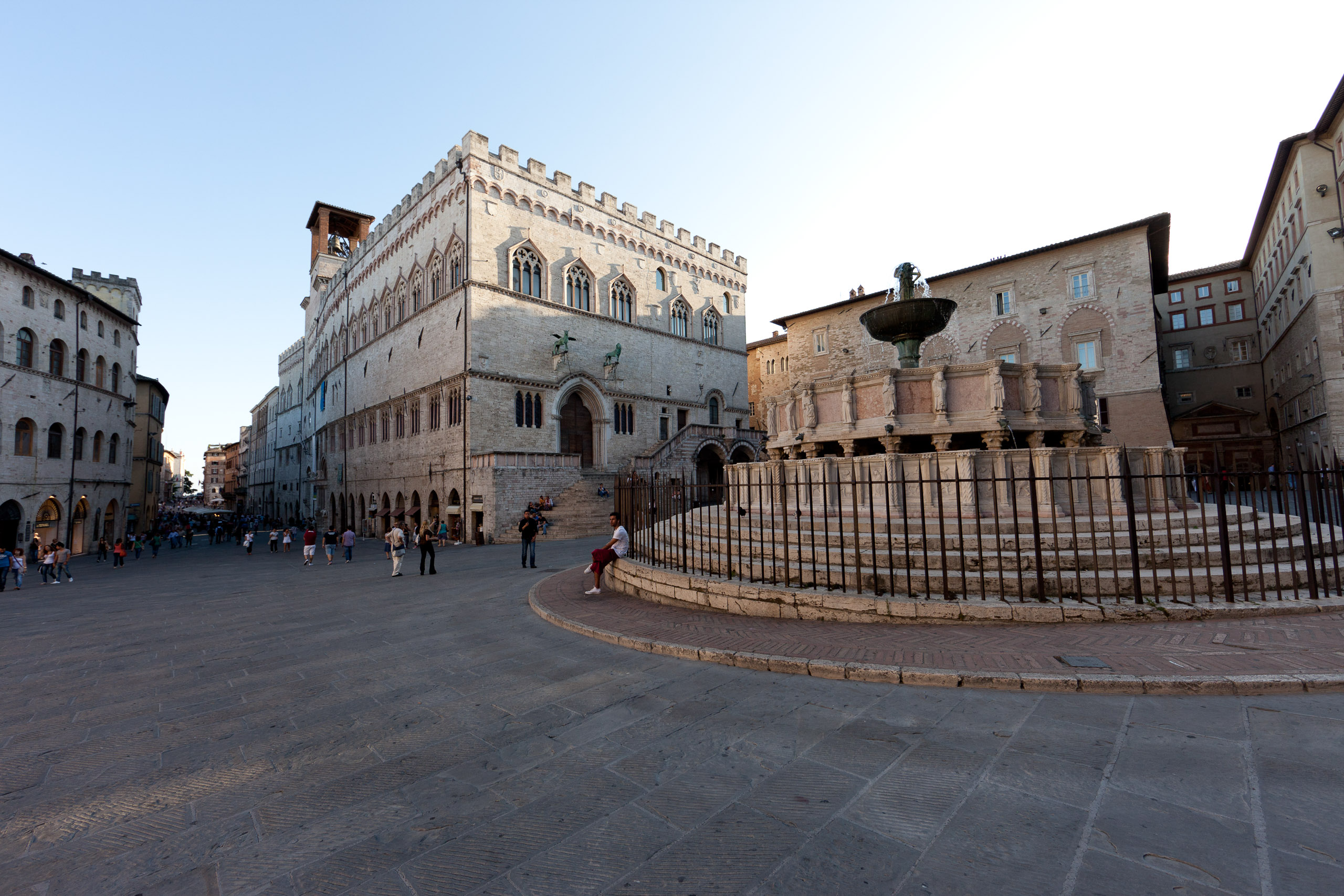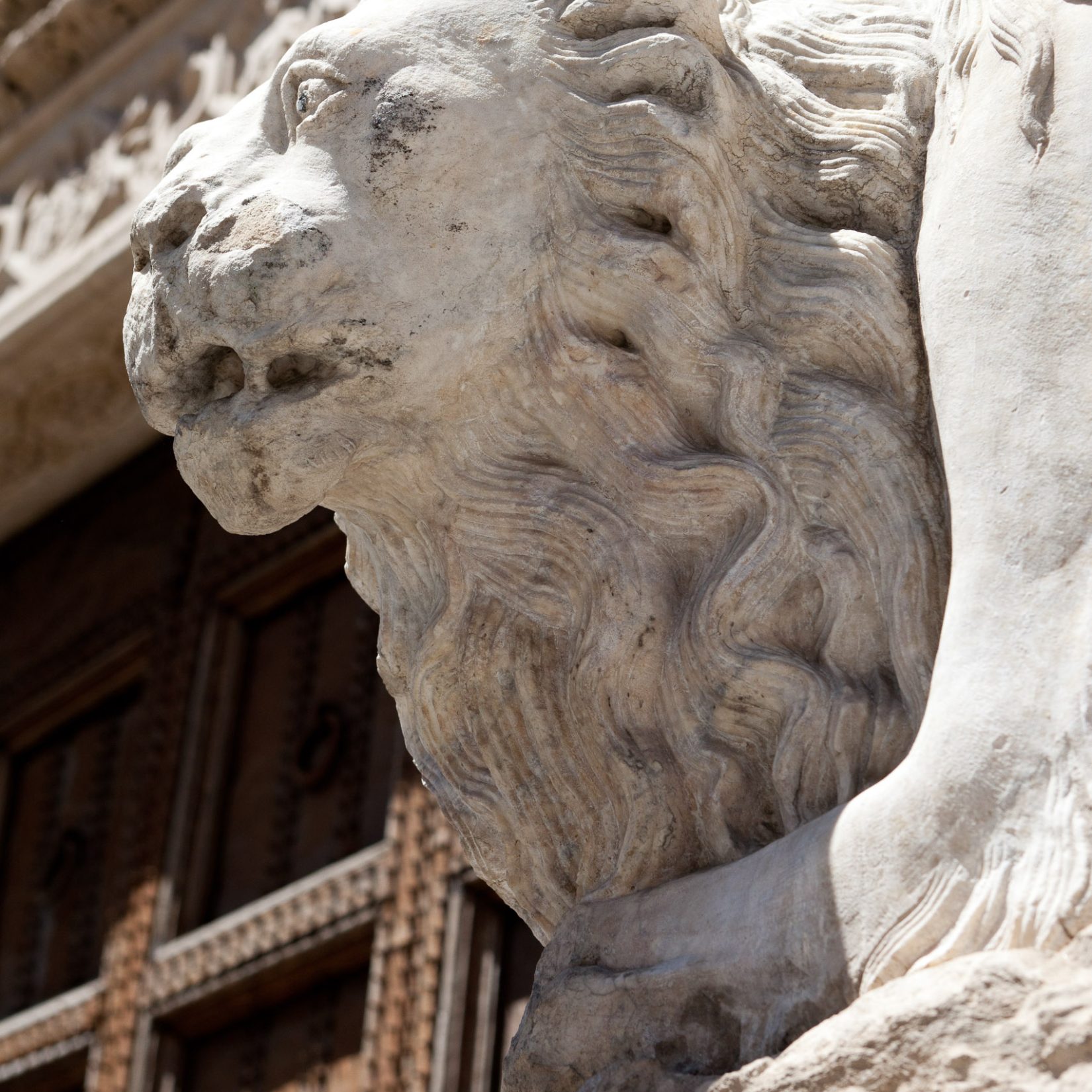
Palazzo dei Priori, situated on the corner between Piazza IV Novembre and Corso Vannucci, is Perugia’s most important historic building. It is considered a symbol of the city because of its impressive architecture, history and magnificence. It houses part of the city hall and the city’s main art gallery, theGalleria Nazionale dell’Umbria
.It is also home to several other places of remarkable interest: the Nobile Collegio del Cambio, the Nobile Collegio della Mercanzia and the Sala dei Notari.
Palazzo dei Priori: a Three-Century History
The Palazzo was built between the 13th and 15th centuries in various phases. This explains the asymmetries and the different styles of the façade.
The first phase of the palace construction dates back to 1293 – 1297 when the Gothic façade on the left side was built by Jacopo di Servadio and Giovannello di Benvenuto. The façade is characterized by its magnificent Gothic gate, leading to the Sala dei Notari, and by its triforas (three-light windows): three on the piazza side and ten facing Corso Vannucci.
The right side, enriched by an ornamental gate, was built during the second phase (around 1335), in place of the old Church of San Severo di Piazza. The Palazzo architecture changed again in 1370, when after centuries of independence for Italian city-states, the Pope reestablished his rule.
He demolished the Palazzo’s roof crenellations which had been a symbol of power for Medieval Italian city-states. They were then rebuilt after Italian Unification (1861).
The Palazzo was further extended in the early 15th century , incorporating the current chapel of San Giovanni. For stylistic balance, the Gothic style was used externally, even though the style was no longer widely in use. Other minor changes were also made during the 16th century.
Of particular note are the Portale Maggiore, the richly decorated entrance to the Galleria Nazionale, in Corso Vannucci; and the 15th-century Arco dei Priori, which was built to connect the palace and the tower opposite. The arch also marks the beginning of Via dei Priori.
Palazzo dei Priori: What to See Inside
Palazzo dei Priori has a long history and a rich heritage. If you are visiting the city for the first time, you will be fascinated by this extraordinary historical monument, by its pale stonework that blends perfectly with the color of the square and by its decorative motifs.
The façade’s great gate is the dominant element of the building: a Griffin and a Lion, symbols of the city, decorate the entrance from Piazza IV Novembre.
The fan-shaped staircase on the square leads to the gate and to one of the Palazzo dei Priori’s pearls: the Sala dei Notari.
Sala dei Notari
Previously known as Sala del Popolo, this room was originally intended for popular assemblies. In the 6th century it became the seat of the “Arte dei Notai” (the Notaries’ Guild), hence the current name. The Sala was modified during the papal dominion, and restored to its original features after 1860.
The vaults are supported by eight Romanesque arches, and the ceilings and walls are covered with vibrant frescoes depicting biblical scenes, myths and fables. On the wall at the back of the room you can see the coat of arms belonging to Braccio Fortebraccio, a historical and legendary figure in the city of Perugia.
Of the original 13th-century frescoes, not much remains. They were restored in 1885 by the artist Matteo Tassi. The seats were also reconstructed in the same period, based on the original 16th-century models.
Galleria Nazionale dell’Umbria, Nobile Collegio del Cambio and Nobile Collegio della Mercanzia
The Palazzo dei Priori houses the Galleria Nazionale dell’Umbria. Its collection is the largest in Umbria, numbering more than 3000 paintings, sculptures and ceramics. The Nobile Collegio del Cambio, is a beautiful frescoed hall. The frescoes are the work of Perugino, who created them between 1498 and 1500. The entrance to the hall is on Corso Vannucci. The Nobile Collegio della Mercanzia was the seat of Perugia’s Medieval Merchants Guild. It is decorated with exquisite Late Gothic wood panelling.
Discover Perugia in a new and unique way through Articity tours! Articity Tours are designed for those who want to discover and visit Perugia, getting in touch with the people, the culture, the tradition and the local talents..
Information
- Sala dei Notari – Practical information and opening times
- Galleria Nazionale dell’Umbria – Practical information and opening times
- Nobile Collegio del Cambio – Practical information and opening times
- Nobile Collegio della Mercanzia – Practical information and opening times



